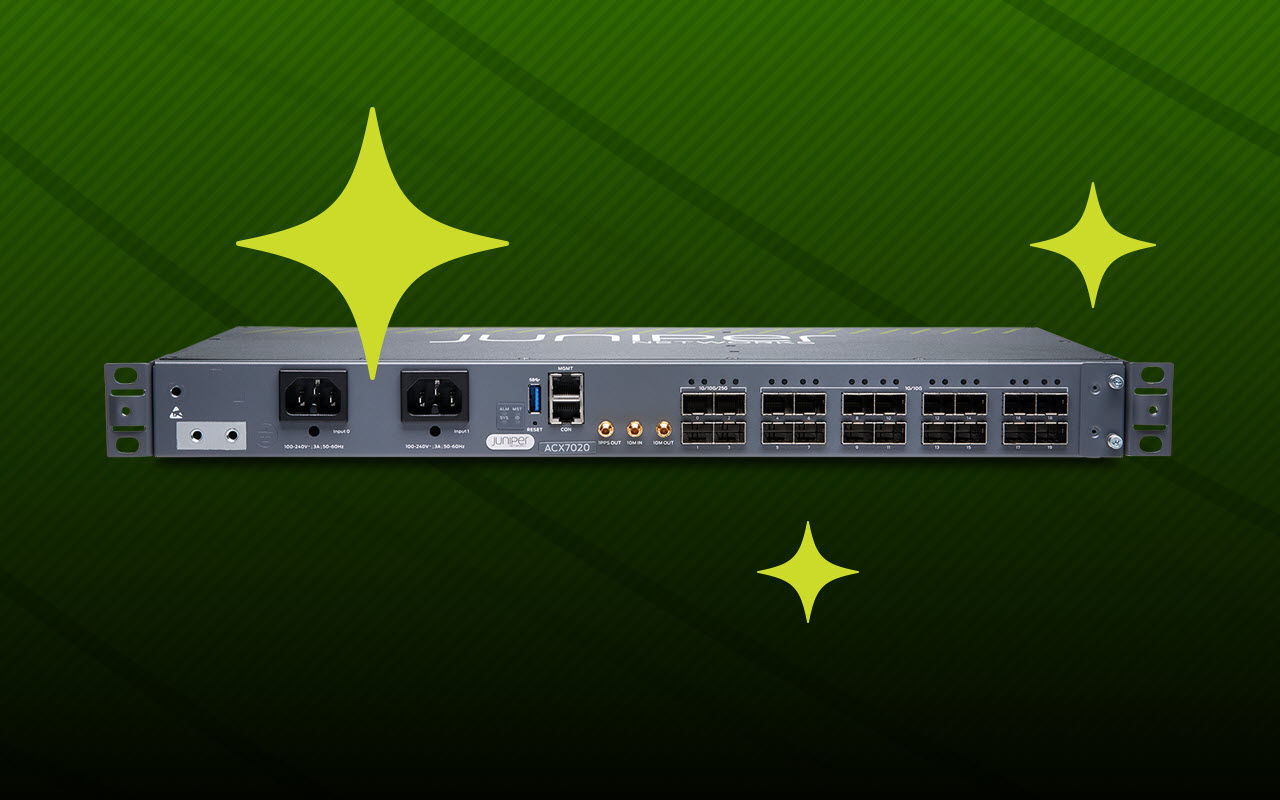Microsoft learned first hand the challenges of providing a great user experience at scale and high velocity while running Azure – one of the world’s largest cloud deployments. Some of the critical requirements are performance, high availability, security, rapid update roll-out, deep telemetry, automation and use of best-of-breed hardware. To meet these needs, Microsoft developed Software for Open Networking in the Cloud (SONiC) for network switch operations and management. Microsoft shared the results of their excellent vision of a new, cloud-optimized NOS by open-sourcing it and making it available to the broader community, allowing hardware and software vendors to integrate, extend and enhance it.
SONiC is now fueling the disaggregation movement, as it enables cloud providers to take advantage of multiple-vendor hardware platforms with a single consistent, scalable open operating system to increase flexibility and operational efficiency of the data center.
Juniper Networks has a long-standing history of disaggregation. This is evidenced today by many industry leading initiatives that enable our customers to innovate more quickly while simplifying operations. SONiC is one of the latest steps along Juniper’s path to disaggregation.
From the start, Juniper has built our products using a disaggregated and modular architecture – it is simply sound engineering. Juniper was the first routing vendor to separate the data plane and control plane, disaggregating them into software and an ASIC-based router allowing centralized routing decisions with high-performance routing. Juniper has also decoupled the Junos Network Operating System (NOS) from the hardware, allowing it to run on a white-box, enabling hardware flexibility in a cloud environment. This decoupling of hardware and software also allows an open-source NOS such as SONiC to run on Juniper hardware providing the advantages of best-of-breed hardware in a SONiC environment.
Taking disaggregation a step further, Juniper has disaggregated Junos itself to improve openness, scalability, reliability and simplicity. Over the last decade, Juniper has made it easy to integrate with third-party software components through a host of methods such as OpenConfig, gRPC, P4, programmable RPD and the Juniper Extension Toolkit (JET), for example. Juniper has componentized Junos to allow our routing stack to run separately on white-box hardware or any Linux-based device. At each of these levels of disaggregation, Juniper brought its engineering superiority to offer an uncompromising solution to the cloud transformation needs.
Therefore, it is a natural evolution for Juniper to support open-source SONiC on our high-performance hardware, integrate our industry-leading routing engine to run on SONiC and contribute to additional enhancements. As part of our commitment to being fast and open, this integration is generally available on the QFX5210-64C with a single ASIC – Tomahawk 2 Broadcom chipset today.
Some of the operational efficiencies running SONiC on Juniper switching platforms include:
- Simplifying operations by disaggregating the Network OS from multi-vendor switching fabric allowing them to implement a single operating system across the infrastructure
- Eliminating duplication and reducing failures with a unified structure for easy control of cloud-scale switching fabric
- Supporting best-of-breed switching hardware for various network tiers, such as Juniper’s single or multi PFE high-performance switching platforms
- Enabling SDN control of multi-vendor fabric in the network with a unified structure
Juniper is also leading the way in adding value to SONiC by developing hardware integrations and software improvements to build upon SONiC’s disaggregation capabilities and expand use cases to include the spine and WAN core deployments, giving customers more flexibility and freedom of choice. These integrations and software enhancements will provide the required performance, scale and features allowing ubiquitous support, and the uniformity of SONiC across the entire data center and specific WAN roles, no longer relegated to just the top of rack and leaf deployments.
Delivering Broader Use Cases
Juniper is focused on delivering hardware platforms optimized for SONiC. SONiC is currently delivered on the Juniper QFX5210 platforms optimized for Leaf and spine deployments in the data center. Juniper is also delivering SONiC on Juniper PTX10008, a multi-PFE modular chassis, allowing network operators to use SONiC in Spine deployments that require deep buffers, WAN core and Data Center Interconnect.
Enhancing SONiC Capabilities
Juniper is facilitating the ubiquity of SONiC throughout data centers and WAN, enabling cloud providers to take full advantage of SONiC’s benefits as a single operating system. While hardware agnostic SONiC is best suited for top of rack and leaf deployments in the data center, Juniper + SONiC provides an HW/SW combo providing superior performance, scale and features. This includes developing enhancements to SONiC infrastructure, including SAI enhancements.
Enabling Hardened Routing On SONiC
Juniper delivers over 20 years of rich routing and deep telemetry innovations in the networking industry to the SONiC OS. Juniper’s Containerized Routing Protocol Daemon (cRPD), built on a full function, industry proven routing stack, easily plugs into SONiC. Juniper’s cRPD includes advanced BGP and policy-based routing not available in open source routing stacks. In addition, cRPD provides telemetry, automation, programmability and performance in a lightweight deployment.
Additional supported open-source initiatives such as OpenConfig can be used for programming the devices running SONiC as well as to access rich telemetry data for detailed monitoring across the platform by leveraging cRPD. This further reduces operational complexity allowing a single management system to manage the end-to-end multi-vendor infrastructure.
Juniper Networks has always been a leader in networking innovation, stemming from our focus on engineering to meet our customer needs. We are continuing that tradition by providing SONiC on Juniper’s high-performance hardware and further innovating by containerizing our deployment hardened routing engine to plug directly into SONiC.
At Juniper, we relish the opportunity to play an innovative, ongoing and active role in the SONiC community. As a leading member of the networking disaggregation movement, we will continue simplifying and enhancing network infrastructure to meet the current and future cloud market needs.
The SONiC image qualified to run on Juniper HW is available on GitHub at: https://github.com/Azure/SONiC/wiki/Supported-Devices-and-Platforms
Join us on June 10 (US/EMEA) and June 11 (APAC) to discover how network architectural shifts create business value at our Juniper Virtual Summit for Cloud & Service Providers. Register here.

























